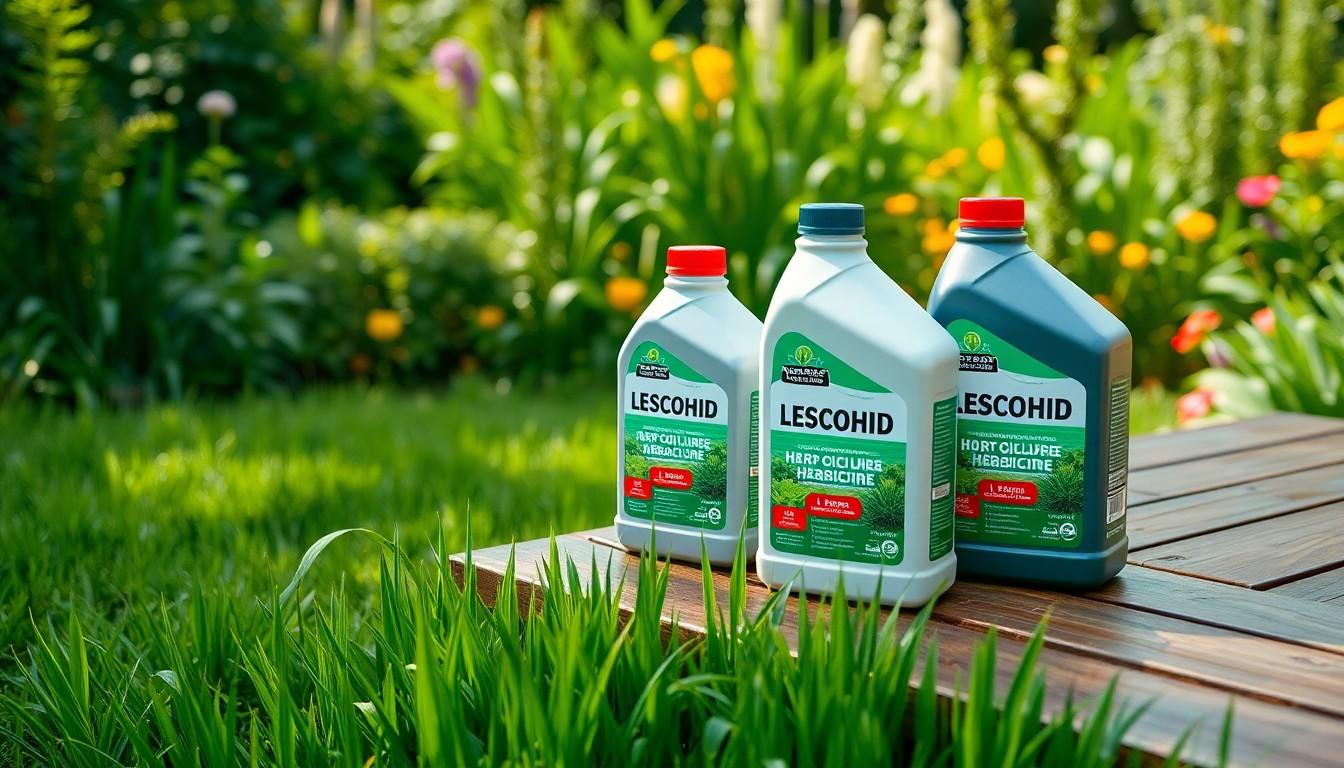When it comes to tackling stubborn weeds, LESCOHID herbicide is the superhero every gardener dreams of. Imagine a world where pesky plants don’t stand a chance against your lush, green lawn. This powerful herbicide not only takes out unwanted guests but does so with the precision of a ninja.
Overview of Lescohid Herbicide
LESCOHID herbicide effectively eliminates stubborn weeds, ensuring garden spaces remain healthy and vibrant. This herbicide targets a wide array of unwanted plant species, including dandelions and clover. Applying LESCOHID yields visible results within days, allowing users to reclaim their landscapes efficiently.
The formulation consists of potent active ingredients aimed at disrupting weed growth while sparing desired flora. When used properly, the herbicide penetrates the root systems of invasive plants, preventing further spread. Homeowners and landscapers alike appreciate its selective action, promoting a lush, green lawn in the process.
Usage instructions recommend applying LESCOHID during active weed growth, typically in spring or early summer. Precise application enhances effectiveness, and users should follow label directions closely to avoid damaging desirable plants. This herbicide is compatible with various lawn care regimens, making it a versatile choice for weed management.
Safety precautions are essential when handling LESCOHID. Users must wear protective clothing, gloves, and eyewear during application. Ensuring minimal contact with skin and inhalation of mists significantly reduces the risk of adverse effects. In addition, keeping pets and children away from treated areas provides further peace of mind.
Monitoring the treated areas post-application highlights the product’s efficacy. Observable changes in weed populations occur rapidly, allowing users to assess the results of their efforts. Maintaining regular lawn care practices alongside LESCOHID usage contributes to long-term success in weed control and landscape maintenance.
Active Ingredients and Composition

LESOHID herbicide contains key active ingredients that function together to disrupt weed growth while protecting desirable plants. The formulation includes effective compounds specifically designed to target common invasive species.
Role of Each Ingredient
Each ingredient in LESCOHID serves a distinct purpose. Glyphosate disrupts the growth of weeds by inhibiting specific enzymes necessary for plant development. Another ingredient, 2,4-D, targets broadleaf weeds by acting as a growth regulator. Together, these components deliver swift results, ensuring invaders like clover and dandelions disappear efficiently. The combination maximizes efficacy, enabling users to reclaim their lawns with minimal impact on desired vegetation.
Environmental Impact
Environmental considerations also play a crucial role in herbicide formulation. LESCOHID is designed to degrade quickly, reducing persistence in the soil and minimizing potential harm to surrounding ecosystems. When applied as recommended, its targeted action limits effects on non-target species, promoting a healthier landscape overall. Safe usage practices, such as avoiding application near water sources, help preserve local wildlife and aquatic habitats. Responsible application ensures effective weed control while safeguarding environmental integrity.
Application Methods
Applying LESCOHID herbicide correctly enhances its effectiveness in weed control. Users should follow recommended practices to achieve optimal results while prioritizing safety.
Recommended Usage
Both timing and method are crucial for successful applications. Applying LESCOHID on calm, dry days prevents drift and enhances absorption. It’s advisable to target actively growing weeds for maximum impact. A rate of 1 to 3 quarts per acre typically suffices, depending on the weed species and pressure. Using a sprayer designed for herbicide ensures even distribution, facilitating thorough coverage of the target area. Checking local regulations before application helps adhere to guidelines specific to the region.
Safety Precautions
Taking safety precautions minimizes risks to health and environment. Wearing protective clothing, including gloves and goggles, is essential during application. Avoiding contact with skin and eyes prevents potential irritation. It’s important to refrain from applying near water sources to protect aquatic life. Cleaning spray equipment thoroughly prevents cross-contamination with other chemicals. Storing LESCOHID in a secure location out of reach of children and pets maintains safety. Following all label instructions ensures effective and responsible herbicide use.
Effectiveness and Performance
LECOHID herbicide excels in delivering noticeable results, making it a top choice for weed control enthusiasts.
Comparison with Other Herbicides
LECOHID distinguishes itself from other herbicides through its unique formulation targeting both broadleaf weeds and grassy invaders. This combination leads to enhanced effectiveness compared to products focused on a single type of weed. Reviewers often note the quick action of LESCOHID, reporting visible results within days, while some competitors may take longer. Additionally, LESCOHID minimizes damage to desired plants, unlike certain herbicides that harm surrounding floras. This targeted approach creates a more resilient lawn overall.
Long-Term Results
Users frequently observe sustained weed control after applying LESCOHID, thanks to its ability to penetrate root systems. With proper application, many find their lawns remain clear of invasive species for extended periods. Research shows that LESCOHID’s active ingredients break down efficiently, leading to reduced soil persistence. This degradation allows beneficial flora to flourish after treatment, promoting a healthier and more vibrant landscape. Regular applications, paired with effective weed management practices, enhance the longevity of LESCOHID’s results.
Potential Side Effects
Using LESCOHID herbicide can lead to certain side effects that warrant attention. Understanding these effects is crucial for safe and effective application.
Risks to Humans and Animals
LESCOHID poses risks to humans when proper safety precautions are not observed. Skin contact or inhalation of the herbicide can cause irritation. Symptoms may include redness or rashes on the skin, along with respiratory issues. For animals, ingestion can result in toxicity. Monitoring pets and livestock during and after application is essential. Keeping children away from treated areas until they are dry reduces exposure risks. Wearing protective clothing and gear minimizes potential harm.
Impact on Non-Target Species
Non-target species face risks when LESCOHID is applied indiscriminately. This herbicide can affect beneficial plants, insects, and wildlife in the vicinity. For instance, pollinators may encounter harmful residues, disrupting their populations. Even small doses that drift during application can impact nearby flora. Protecting local ecosystems requires careful application techniques, especially around sensitive areas. Users are urged to follow label instructions, which include application methods designed to minimize collateral damage. Such practices ensure the health of surrounding non-target species while effectively controlling invasive plants.
Conclusion
LESCOHID herbicide stands out as a powerful ally in the fight against invasive weeds. Its unique formulation effectively targets both broadleaf and grassy species, delivering swift results that help maintain a beautiful landscape. By understanding its active ingredients and adhering to safe application practices, users can maximize its benefits while minimizing environmental impact.
With careful use, LESCOHID not only clears unwanted plants but also promotes a healthier ecosystem. Regular applications combined with responsible management strategies ensure lasting results, allowing gardens and lawns to thrive. Embracing LESCOHID is a smart choice for anyone looking to reclaim their outdoor spaces from stubborn weeds.



